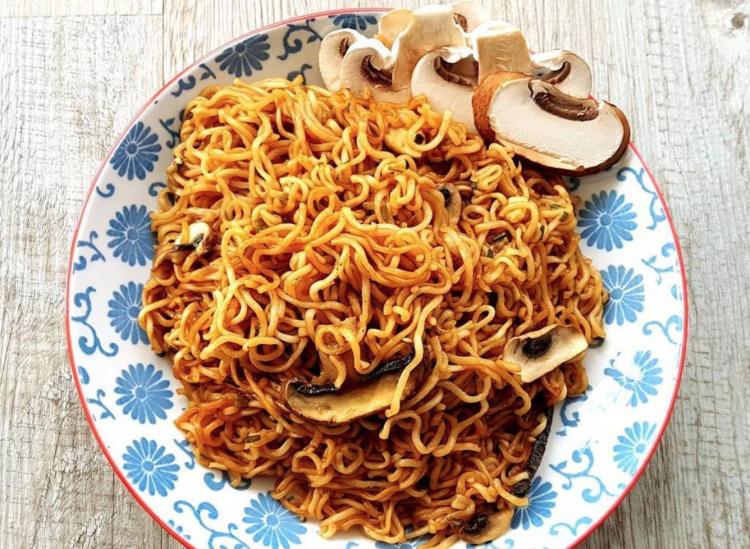5 Japanese Noodles You Need To Know When You’re Gearing Up For Soup Season

@pandafarmer666
Now that the cool weather is setting in, it’s time to get in all of those noodle soups. There’s denying the deliciousness of Japanese noodles served in soups and hot dishes, or cold with dipping sauces. There’s nothing like getting the best of everything in one bowl with savory umami-packed broth, fresh and filling noodles, spicy toppings and crunchy vegetables. When you’re looking at a menu and trying to decipher between the different noodles, here’s what you need to know.
Ramen
With roots in China, ramen-style noodles are made with wheat flour, water, salt and kansui — this is an alkaline water, which gives the ramen it’s bounciness and yellowish color. Even though sizes and shapes may vary, typically ramen noodles are either straight and thin, or wavy and thin. The wavy ramen noodles with kansui pair better with miso-style ramen because they can capture the little bits of fermented soybean. The classic thin and straight ramen noodles work with the lighter broths.
Yakisoba
The world yakisoba translates to “fried buckwheat,” but these noodles are actually made with wheat flour and fried. These ramen-style wheat noodles are prepared with bite-sized pieces of pork and veggies like cabbage, carrots, onions and bean sprouts. Yakisoba sauce, similar to oyster sauce, is used to flavor the noodles. The sauce is made with ingredients like ketchup, soy sauce, brown sugar, Worcestershire sauce, ginger and garlic.
Yakisoba is topped with garnishes like aonori (seaweed powder), shredded pickled ginger and katsuobushi (fish flakes). In Japan, it’s common to pile yakisoba noodles into a sliced hot dog bun and top it with mayo and pickled ginger. Don’t knock it till you’ve tried it.
Udon
Soft and chewy, udon noodles are thick wheat noodles. They’re made with just flour, sea salt and water. Fresh is definitely the preferred way to go with udon, but a dried version will also work, it’ll just be more on the dense side. Since udon noodles have a neutral flavor, they’re perfect for bold and flavorful noodle dishes, with anything from curried broths to fried fish soups.
You’ll see udon in hot noodle soups throughout the year, but you’ll also see it with grated veggies and dipping sauce on the side, like a sesame sauce or a sweet soy sauce-based dipping sauce. Some udon noodles are flat, wide and thin, while others are thick and round. If you want to try all sorts of Japanese udon noodle creations, TsuruTonTan focuses specifically on these soft and chewy wheat noodles.
Soba
Soba noodles are made with buckwheat flour and they have a strong, nutty flavor. The thickness of soba noodles can be compared to spaghetti — a flat brownish-gray spaghetti — and they’re served either hot or cold. The strong nutty flavor of soba makes it perfect for stir-fries and salads, but you’ll also see it in a lot of hot noodle soups.
Since there is a little bit of wheat flour in soba noodles, they aren’t usually gluten-free, but you can find pure gluten-free buckwheat noodles if you search for them. Restaurants like Cocoron in New York City specialize in soba noodle soups that can rival your favorite ramen.
Somen
Similar to its noodle siblings, somen is wheat-based. Compared to rest of the noodles, somen noodles are the thinnest variety. You’ll see them served cold as a light dish with a dipping sauce called mentsuyu. This multipurpose dipping sauce is made from soy sauce, Mirin, sake and dried bonito flakes. In addition to flour and water, somen noodles are made with vegetable oil and are stretched while they’re being formed. The cooking process only takes about a minute and a half since they’re so thin and fragile. When you see somen noodles in a hot soup, it’s called nyumen, which comes with various meats and veggies.











